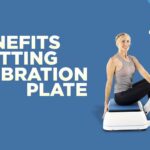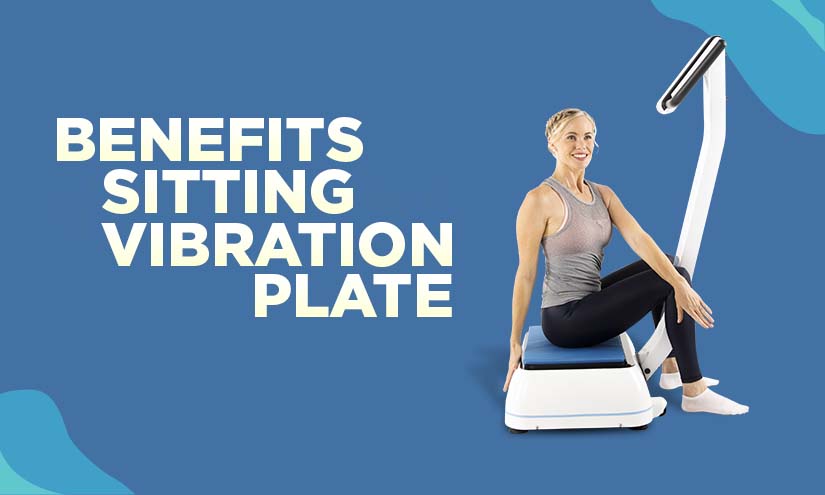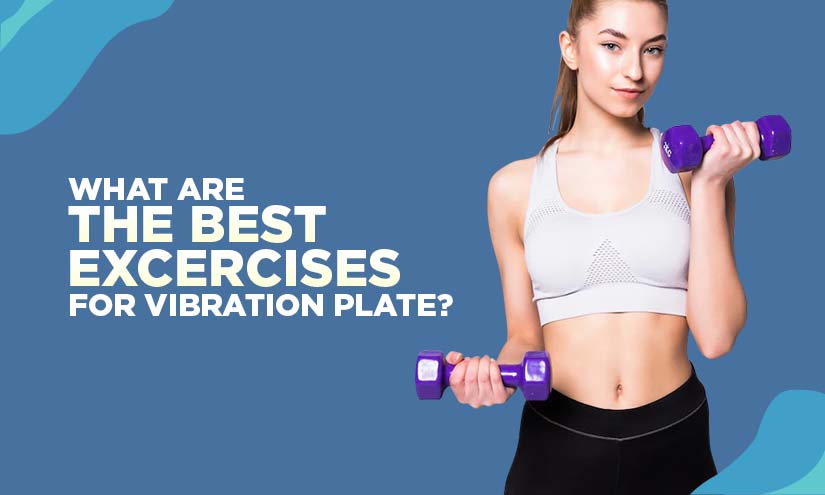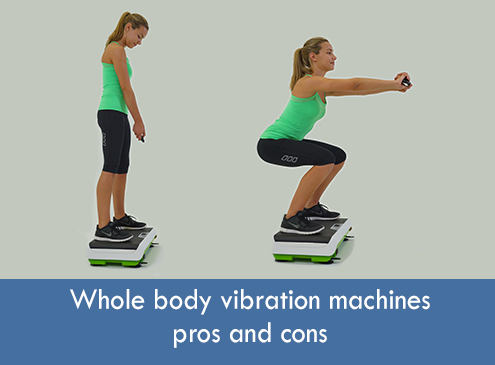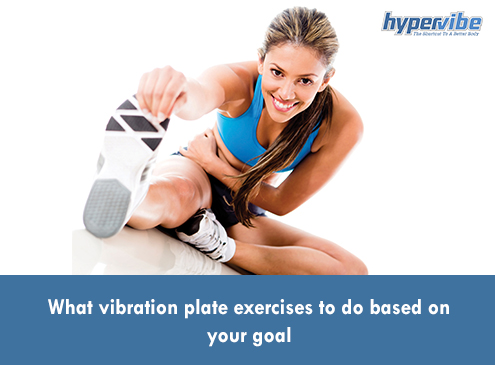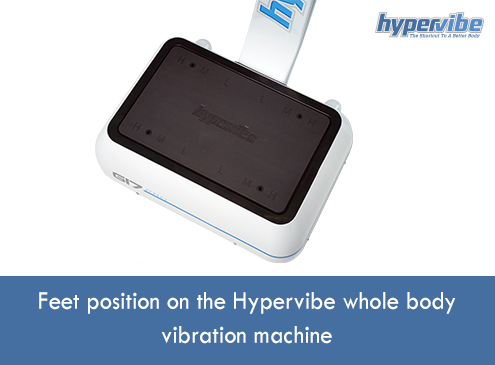Comparing Vibration Plate Types: Linear vs. Tri-Planar vs. Pivotal
Vibration plates are exercise machines that use whole-body vibration to stimulate muscle contractions and increase strength, flexibility, and circulation. They work by producing vibrations that are transferred to the body, causing the muscles to contract and relax at a rapid rate. This rapid muscle stimulation can lead to increased muscle tone and strength, improved balance and coordination, and reduced inflammation.
Importance of choosing the right type of vibration plate
Choosing the right type of vibration plate is important for achieving the desired fitness results. Different types of vibration plates produce different types of vibrations, which can affect how the muscles respond to the machine. Therefore, selecting the right type of vibration plate based on individual needs and fitness goals is critical for optimizing the workout experience.
Overview of different types of vibration plates
There are three main types of vibration plates: linear, tri-planar, and pivotal. Linear vibration plates produce vibrations in a straight line, while tri-planar vibration plates produce vibrations in multiple directions. Pivotal vibration plates produce an oscillating motion that simulates walking. Each type of vibration plate has its own unique benefits and limitations, and selecting the right one depends on individual fitness goals and preferences.
Linear Vibration Plates
Linear vibration plates produce vibrations that travel in a straight line, typically from the platform to the user’s feet. These vibrations cause the user’s muscles to contract and relax rapidly, providing a low-impact workout that can improve muscle strength, balance, and flexibility.
One of the main advantages of linear vibration plates is that they are effective at stimulating the muscles without causing excessive joint stress or impact on the body. They are also typically more affordable than other types of vibration plates and can be easily adjusted to different levels of intensity. Additionally, linear vibration plates can help improve bone density and circulation.
One disadvantage of linear vibration plates is that they may not be as effective at targeting deep muscle tissue as other types of vibration plates. They may also produce a more uncomfortable vibration sensation than other types of plates, which can be difficult for some users to tolerate.
-
-
Suitable users and fitness goals
Linear vibration plates are a good choice for beginners, as well as those looking for a low-impact workout that targets multiple muscle groups. They are also suitable for individuals with joint pain or other physical limitations, as they provide a gentle workout that can help improve range of motion and flexibility. Linear vibration plates can be used for a variety of fitness goals, including weight loss, muscle toning, and injury rehabilitation.
Tri-Planar Vibration Plates
Tri-planar vibration plates produce vibrations that travel in multiple directions, typically up and down, side to side, and front to back. These vibrations can provide a more intense workout than linear vibration plates, targeting deeper muscles and increasing muscle activation.
One of the main advantages of tri-planar vibration plates is their ability to target specific muscle groups, including the core and lower body. They can also be effective for improving balance and coordination, as the multidirectional vibrations require the user to engage multiple muscle groups simultaneously. Additionally, tri-planar vibration plates can help improve flexibility and circulation.
One disadvantage of tri-planar vibration plates is that they are typically more expensive than linear vibration plates. They can also produce a more intense vibration sensation, which may be uncomfortable for some users. Additionally, multidirectional vibrations can cause more stress on the joints than linear vibrations, which may not be suitable for individuals with joint pain or injuries.
-
-
Suitable users and fitness goals
Tri-planar vibration plates are a good choice for individuals looking for a more intense workout that targets specific muscle groups. They are also suitable for individuals with a higher fitness level or those looking to improve their balance and coordination. Tri-planar vibration plates can be used for a variety of fitness goals, including muscle building, weight loss, and injury rehabilitation. However, they may not be suitable for individuals with joint pain or other physical limitations.
Pivotal Vibration Plates
Pivotal vibration plates produce an oscillating motion that simulates the motion of walking. These vibrations cause the user’s muscles to contract and relax, providing a low-impact workout that can improve muscle strength, balance, and circulation.
One of the main advantages of pivotal vibration plates is that they can provide a gentle, low-impact workout that is suitable for individuals with joint pain or injuries. They are also effective at improving circulation and lymphatic drainage, which can help reduce inflammation and promote healing. Additionally, pivotal vibration plates can improve balance and coordination.
One disadvantage of pivotal vibration plates is that they may not be as effective at targeting deep muscle tissue as other types of vibration plates. They may also be less effective at increasing muscle strength and tone than tri-planar or linear vibration plates. Additionally, pivotal vibration plates may not be suitable for individuals with certain medical conditions, including pacemakers.
-
-
Suitable users and fitness goals
Pivotal vibration plates are a good choice for individuals looking for a gentle, low-impact workout that targets multiple muscle groups. They are also suitable for individuals with joint pain or injuries, as they provide a low-impact workout that can help improve range of motion and flexibility. Pivotal vibration plates can be used for a variety of fitness goals, including weight loss, injury rehabilitation, and improving balance and coordination. However, they may not be suitable for individuals looking to build significant muscle strength or target specific muscle groups.
Comparison of Different Types of Vibration Plates
Differences in vibration type and direction
The main difference between linear, tri-planar, and pivotal vibration plates is the type and direction of the vibration they produce. Linear vibration plates produce vibrations that travel in a straight line, while tri-planar vibration plates produce multidirectional vibrations that travel up and down, side to side, and front to back. Pivotal vibration plates produce an oscillating motion that simulates the motion of walking.
Comparison of advantages and disadvantages
Linear vibration plates are a good choice for individuals looking for a low-impact workout that targets multiple muscle groups, but may not be as effective at targeting deep muscle tissue. Tri-planar vibration plates are more intense and effective at targeting specific muscle groups but may be more uncomfortable for some users and cause more stress on the joints. Pivotal vibration plates provide a gentle, low-impact workout that is suitable for individuals with joint pain or injuries, but may not be as effective at increasing muscle strength and tone.
Analysis of suitable users and fitness goals
The choice of vibration plate type depends on the individual’s fitness goals and physical limitations. Linear vibration plates are suitable for beginners and individuals with joint pain or limitations and can be used for a variety of fitness goals. Tri-planar vibration plates are suitable for individuals with a higher fitness level or those looking to target specific muscle groups. Pivotal vibration plates are suitable for individuals with joint pain or injuries and can be used for injury rehabilitation, improving balance and coordination, and promoting circulation.
In conclusion
It’s clear that there are several types of vibration plates available, each with its own unique advantages and disadvantages. Linear, tri-planar, and pivotal plates all produce different types of vibrations and are suitable for different types of users with varying fitness goals and limitations.
To summarize, linear plates are great for low-impact workouts that target multiple muscle groups, while tri-planar plates are more intense and better for targeting specific muscles. Pivotal plates are gentle and low-impact, making them a good choice for folks with joint pain or injuries.
When choosing the right vibration plate, it’s important to consider your fitness goals and personal preferences. If you’re new to vibration plates or have joint pain, a linear or pivotal plate might be a good starting point. If you’re more experienced or looking to target specific muscles, a tri-planar plate might be the way to go.
Ultimately, the choice of vibration plate should be based on what works best for you and your body. By taking the time to understand the differences between each type of plate and considering your personal needs, you can make an informed decision and get the most out of your vibration plate workouts.
Resources:
https://health-beauty-connection.com/2-types-of-vibration-machines-whats-the-difference/




